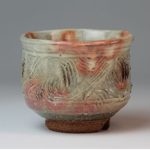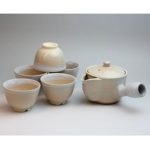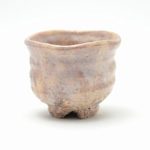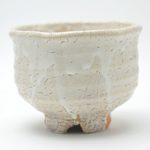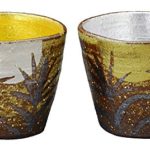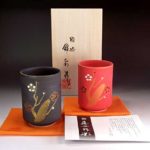Traditional Hagi-yaki for the Japanese sake flask tokkuri and katakuchi
When it comes to the Japanese ceramics, there are the various producing areas. And each of them has the characters. If you look for a sake bottle which has simple and profound charm, I recommend Hagi ware.
Compared with Imari (Arita) ware or Kutani ware, the rugged appearances would project the image of an unpolished pottery.
But it’s not true. Hagi ware was born to express the spirits of “wabi” and “sabi”. They, emphasizing quiet simplicity and subdued refinement, are the Japanese traditional sense of beauty.
The sake bottles of Hagi ware don’t have the bright colors and the streamlined shape. It dares not to aim for the easy beauty to understand.
About a Hagi-yaki
Origin
During the Age of Civil Wars, the high‐powered daimyos, Oda Nobunaga (1534-1582) and Toyotomi Hideyoshi (1537-1598) became the patron of Sen-no Riyu (1522-1591).
He established the Japanese tea ceremony and pursued the idea of “wabi” and “sabi”. And Mōri Terumoto (1553-1625) also has the association with the great tea master. He had often thought to create a new pottery for tea bowls.
From 1592 to 1598, the Japanese armies invaded the Korean Peninsula by the order of Toyotomi Hideyoshi. Though the invasion fell through, the daimyos including Terumoto taken the Korean pottery from the country to Japan. Because the Korean ceramic were most popular for the tea ceremony.
The feudal lord of Hagi Domain Mōri Terumoto treated the potteries Lee Shakuko and Lee Kei (brother) with hospitality and make them create a pottery of Hagi. It was the origin of Hagi-yaki.
Features
The texture of a Hagi ware is soft and plump. Most of the wares don’t have painting. They express the beauty with only the shapes and the colors and patterns of the clay and glaze.
The craftsmen of the Hagi ware mix three soil, Mishima (red), Daido (gray), and Mitake (white). And they mainly use the loquat color glaze or white bush clover color glaze.
The more you use it the more they change the colors. That is called as “various changes of Hagi ware”.
See other pages of Hagi-yaki
Hagi-yaki ceramic sake bottles
!Limited Stocks!
Tokkuri
Tokkuri has the rounded shape with a neck. Since the mouth is small, the sake water in the bottle is hard to get warm or cold.
Katakuchi
The mouth of a katakuchi is wider than a tokkuri. You can fully enjoy the scent of the sake.
*Some of the products is named as “tokkuri”. But their shapes are katakuchi.
Sets with sake cups
Why don’t you see also the tin sake cups and sets of Nousaku?


